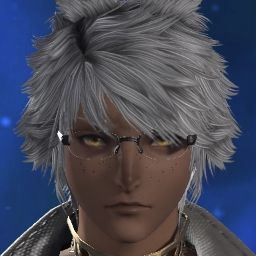I'd like to take a moment to first talk a little bit about the combat system of the game Honkai Star Rail. For anyone not familiar with HSR here is a brief explanation of some important aspects to the game's design that I will be referencing in my following argument:
Honkai Star Rail (HSR) is a turn-based RPG with an ever-increasing roster of playable characters. In combat, characters have a basic attack, a skill, a passive, and their ultimate (their limit break, essentially). These characters are categorized by their role in combat as well as their particular elemental affinity, such as Physical, Fire, and Quantum, amongst others (seven in total). All the damage dealt by a character will align with their particular element. Enemies will generally have between two and four elemental weaknesses. Attacks an enemy is weak to not only deal additional damage, but also reduce that enemy's "toughness." Above each enemy's HP bar is a toughness bar, and when that bar is completely depleted, you inflict what's referred to as "break," dealing bonus damage and inflicting a specific status condition based on the element used to inflict break on the enemy. Physical attacks inflict bleed while fire attacks inflict burn, for example.
I'd like to bring attention to two of HSR's characters. The first is Kafka, a character with the lightning elemental affinity. When break is inflicted with lightning damage, shock is inflicted upon the enemy--a DOT. When Kafka uses her ultimate, she deals damage to all enemies and can inflict an extremely powerful version of shock without breaking enemies. Her passive also causes her to perform a follow-up attack outside of her turns whenever one of her teammates performs their basic attack: Kafka will attack the same enemy and inflict this same shock debuff to them without needing to break them. When performing her skill, she attacks multiple enemies and causes all DOTs on the target to tick for a percentage of their normal damage.
The second character I'd like to talk about will be Blade. Blade is a wind character. When break is inflicted with wind damage, wind shear is inflicted, which is also a DOT. Unlike Kafka, though, Blade's gameplay does not revolve around wind shear. His skill consumes a percentage of his HP to grant him a buff that changes his basic attack from a weak single target attack to a powerful AOE attack. When performing this enhanced basic attack, he also consumes some of his HP. Anytime Blade takes damage or consumes his own HP, he gains a stacking buff called Charge, and every 5 stacks of Charge will cause him to automatically perform a special follow-up attack outside of his normal turns. His ultimate first sets his HP to 50%, then deals damage to multiple enemies based on both his attack and his missing HP.
So, why am I bringing up all this? Well, let my start by asking you a question: Both of the above characters are DPS characters, but which of the two, if any, would you describe as DOT DPS characters? Is Kafka a DOT character? Is Blade a DOT character?
If you ask me, Kafka is very much a DOT character because all of her gameplay revolves around inflicting a DOT and causing all DOTs on enemies, including ones applied by other party members, to tick outside of the afflicted enemy's turns. But I would not say that Blade is a DOT character. Why? Because even though he is capable of inflicting a DOT, that is not the focus of his gameplay--the focus of his gameplay is HP consumption.
So let's pivot over to FFXIV's "Barrier healers." I ask you, do either Scholar or Sage focus on applying and interacting with barriers in their gameplay? At first glance, that may seem to be true, but as you get more familiar with these healers, you'll quickly find that this isn't the case at all. At the highest level of play, neither Scholar nor Sage seem to be relying on barriers all that much. Let's look at some examples:

These above images showcase the action frequency of high-performing healers in savage (particularly P10S). Let's break down how much each of these players relied on different forms of healing in their clears:
SCH
- Pure Healing: 10 casts
- HP Extention: 4 casts
- Regen Healing: 8 casts
- Barrier Healing: 5 casts
In addition, maintained approximately 7 minutes and 20 seconds of Eos uptime: continuous pure healing over time.
In addition, maintained approximately 40 seconds of Seraph uptime: continuous barrier healing over time.
SGE
- Pure Healing: 15 casts
- Regen Healing: 20 casts
- Barrier Healing: 6 casts
In addition, maintained approximately 8 minutes of Kardia uptime: continuous pure healing over time.
As we can see, while both Scholar and Sage have access to barriers, barrier application is not the primary focus of either healer. Instead, both Scholar and Sage display a much larger focus on sustained healing over time thanks to Eos and Kardia. Scholar's access to Summon Seraph does give them small phases of barrier-focused application, but once again, this is not their primary method of healing. Moreover, why is that barrier healers have no way of engaging with barrier healing through their gauge mechanics? Gauge mechanics are supposed to represent a specific job's core identity. See Red Mage's black and white mana management, Dragoon's life of the dragon enabling Stardiver, Black Mage's astral fire and umbral ice cycles, Bard's songs, Dancer's dance steps... the list goes on. Meanwhile, Scholar's gauge and Sage's gauge have nothing to do with barriers for the barrier healers and everything to do with pure healing, regen healing, and mitigation.
What I'm ultimately getting at is calling Scholar and Sage "barrier healers" makes as much sense as calling Blade a DOT DPS. Having niche barriers does not make that the heart of either healer's healing playstyle.
-
02-22-2024 10:00 AM #1Player

- Join Date
- Sep 2013
- Location
- Limsa Lominsa
- Posts
- 3,607
- Character
- Noah Orih
- World
- Faerie
- Main Class
- Sage Lv 90
"Barrier Healers" aren't barrier healers
(25)
-
02-22-2024 10:23 AM #2Player

- Join Date
- Aug 2021
- Location
- Gridania
- Posts
- 6,363
- Character
- Andreas Cestelle
- World
- Jenova
- Main Class
- Scholar Lv 100
I’ve said it before and I’ll say it again if square wants the barrier/regen split to work then they need to force it in all 2 healer content and nerf the shields pure healing into the ground with contingencies for dungeons
SCH for example shouldn’t have access to blessing, it doesn’t need whispering dawn, indom shouldn’t be able to crit and should have a longer CD consolation should be entirely a shield and eos embrace should cast a sustained light mitigation rather than a heal, in exchange SCH should get access to 2-3 more mitigations so it can apply 1-3 mitigations on functionally every mechanic while the regen healer then proceeds to heal back up after the raidwide
So functionally the shield healer mitigates 40% of your health bar worth of damage and the regen healer heals up 50% of your HP that still got chunked so to speak
Without a nerf on shield healers (and I say this as a shield healer main) both healer balance and class fantasy fall by the wayside(16)
-
02-22-2024 10:39 AM #3Player

- Join Date
- Mar 2016
- Posts
- 7,244
- Character
- Oscarlet Oirellain
- World
- Jenova
- Main Class
- Warrior Lv 100
Literally depends on the player. A lot of healers will teach people that to play Scholar, they should apply Adlo lots and use excog all the time. I see this regularly in duties where Scholars pointlessly spam Adlo on me and use Excog when I'm a Warrior and don't need any of these things.
When I play Scholar, I virtually never use Adlo. I play it as a Pure Healer. I reactively heal people when they actually take damage instead of constantly shielding them "in case" they stand in a red circle. There are few dungeons that make me use Adlo and one of them is occasionally the last pull of Amaurot. Any support that has done that pull knows what I mean! Depends on the tank though, sometimes I can get away without it, depends how squishy they are.
I use Excog as a reactive heal on bosses, because if it ends up not being needed then I get to use Energy Drain instead.
I see similar teachings with Sage. People will teach you to spam barriers on people. I don't play it like that, I just play it like Scholar as a pure healer. But it's more justified to play it with barriers due to the Addersting system.
Ultimately, they are barrier healers because the majority of casual players use them that way, despite that many raider healers don't.(1)
-
02-22-2024 10:44 AM #4
I spam barriers as Sage if only to do more DPS when it breaks. Other than that I use the regular heals unless I want to shield from an incoming raid wide or tankbuster.
(0)
-
02-22-2024 10:53 AM #5Player

- Join Date
- Sep 2013
- Location
- Limsa Lominsa
- Posts
- 3,607
- Character
- Noah Orih
- World
- Faerie
- Main Class
- Sage Lv 90
You could make that argument for a lot of things, potentially. You could argue that Black Mage is thematically an ice mage because anyone can ignore their fire spells and spam Blizzard IV. You could argue that Red Mage is a pure healer because anyone can focus on topping players off with Vercure instead of DPSing. You could argue that Dancer is a melee DPS because anyone can use their AOE rotation instead of their single target rotation even when there's only one enemy. You can do those things as silly as they may sound. Outside of Savage, you are still going to clear dungeons, normal raids, alliance raids, variant dungeons, etc. even if you play that way on those examples, amongst many other possible alternative play styles you can think of.
But the point is to describe how the play style of Scholar and Sage work when played correctly. No matter how you slice it, Scholar and Sage both benefit from ignoring their GCD barriers as much as possible and relying on everything else instead, because everything else is vastly superior.
Unfortunately, every time you spam a barrier to gain Addersting, you are losing damage, not gaining damage.
Dosis + Dosis = 660 potency damage
E. Diagnosis + Toxikon = 330 potency damage
E. Diagnosis and E. Prognosis are also some of the weakest ways you can handle raidwides and tankbusters. Does this matter at a casual level? No, not really. But there are other tools far better suited for addressing those mechanics than your GCD heals which otherwise clash with the entire rest of your kit.(20)
-
02-22-2024 10:53 AM #6
-
02-22-2024 10:56 AM #7Player

- Join Date
- Mar 2016
- Location
- Dravania
- Posts
- 5,778
- Character
- Gemina Lunarian
- World
- Siren
- Main Class
- Scholar Lv 100
Barrier healer in FFXIV simply means these healers have greater access to shields opposed to HoTs. What this essentially means is that healers like SGE and SCH have GCD/on demand access to HP extending shields, while only being able to access HoTs through abilities with cooldowns far greater than the GCD. In contrast, the Pure healers WHM and AST have GCD/on demand access to HoTs, and limited access to shields that are on CDs much longer than the GCD. How often the healers actually utilize these abilities is kind of redundant, especially when taking into consideration that using the GCD for anything other than damage is generally frowned upon regardless of the content difficulty. All four healers have a pretty balanced skillset of oGCD abilities that direct heal, shield, or provide a HoT and generally rely on these to do all of their healing/shielding, essentially making them all play the exact same. If you were to show graphs of AST and WHM, I guarantee how their skillset is disseminated will be nearly identical to the barrier healers.
tl;dr? barrier/pure healer sub roles is a ruse.(2)Last edited by Gemina; 02-22-2024 at 10:59 AM.
-
02-22-2024 11:04 AM #8Player

- Join Date
- Sep 2013
- Location
- Limsa Lominsa
- Posts
- 3,607
- Character
- Noah Orih
- World
- Faerie
- Main Class
- Sage Lv 90
Except I would argue that, even with your definition, HoTs are still more on demand and more easily accessible than barriers on barrier healers. Barrier heals eat through your MP. Regens don't. Both Scholar and Sage have access to a permanent, passive single target regen: Eos and Kardia. Both have access to potent regens with mitigation attached on a 30 second cooldown with a 15 second duration: 50% of the entire fight on the entire party. Both also have access to a similarly strong regen that lasts 22 seconds on a 60 second duration: roughly 35% of the entire fight on the entire party. If that isn't massively accessible, than I don't know what is, because you don't actually benefit all that much from having spammable HOTs since HOTs, by their nature, need time to actually do anything anyway.
(11)
-
02-22-2024 11:30 AM #9Player

- Join Date
- Mar 2016
- Posts
- 7,244
- Character
- Oscarlet Oirellain
- World
- Jenova
- Main Class
- Warrior Lv 100
I don't think that is as widespread as barrier healers spamming their barriers. Is it? If it is, I've never noticed it being common among BLMs in dungeons. Whereas almost any healer I get in dungeons spams barriers on me.
Ok, now I never see this at all. I only ever see a RDM vercure when they just died and want to restore their HP before a raid-wide.You could argue that Red Mage is a pure healer because anyone can focus on topping players off with Vercure instead of DPSing.
Arguably many healers use shields excessively in Savage as well and still clear. Although it's more justified because they just want to clear and don't want people dying of lack of heals which is more likely to happen in Savage. But I still see plenty of moments where we could just use our self-heals like Equilibrium, Bloodwhetting, Bloodbath, Second Wind and so on, or where tanks could time a Shake It Off/Divine Veil so healers don't need to. Which is only likely to happen in a static.Outside of Savage, you are still going to clear dungeons, normal raids, alliance raids, variant dungeons, etc. even if you play that way on those examples, amongst many other possible alternative play styles you can think of.
Although I would like to agree, if you were around prior to them being designated a "Barrier healer", such as in Heavensward and Stormblood, which it seems like you were?, the entire community used to perceive Scholar as a barrier healer even in Heavensward.But the point is to describe how the play style of Scholar and Sage work when played correctly.
Their Adlos were seen as extremely powerful and long-lasting, especially when they crit, allowing them to DPS lots, while White Mage's Stoneskin was seen as weak and useless, disappearing the moment they were applied, but their pure heals seen as very strong. Which led to Stoneskin being removed in Stormblood.
That reputation just continued and AST being able to switch between Barrier and Pure healer in Heavensward added some official support to the concept of a Barrier and Pure healer distinction.
But they always avoided the actual distinction in any other ways until Endwalker released, where they finally accept what the community had perceived for most of the game's life.
I'm not saying it's right. I'm not saying I agree with it. But the concept of a "barrier healer" has been widespread and even widely accepted among most of the community, unlike things like "ice mage" and "RDM vercure".
Oh, I assumed it would be DPS neutral like WHM. Good thing I've never used it then.Unfortunately, every time you spam a barrier to gain Addersting, you are losing damage, not gaining damage.(0)
-
02-22-2024 01:46 PM #10Player

- Join Date
- Mar 2016
- Location
- Dravania
- Posts
- 5,778
- Character
- Gemina Lunarian
- World
- Siren
- Main Class
- Scholar Lv 100
"On demand" is just another way of saying the ability is on the GCD. Passive regens such as through Eos/Kardia, spreading out CDs so at least one ability is always available, and the effect being granted as a secondary buff don't qualify such abilities as "on demand" On demand abilities can also be stacked onto any of these existing effects whether granted by the healer themselves, or another healer.
Also, MP management really isn't a thing anymore. Certainly not to the point where requiring MP to cast a HoT or shield places the caster at a disadvantage. Again, though this is a bit redundant because it is generally frowned upon to use GCDs for anything other than damage. If this was not the case, then you would be correct that the Barrier healers would ironically be at an advantage over the pure healers due to having access to passive/free HoTs. Similarly, if MP management had a greater impact on the healers, then the pure healers would hold an advantage over the barrier healers with their respective shielding abilities. It just goes to show that this dev team does not know how to design healers in their own game.
To eliminate these inadvertent shortcomings to the barrier/pure healers those advantages would need to be eliminated or heavily nerfed, and extended to the respective healers. But this is also something the dev team would only need to worry about if they made healers more dependent on MP management and their GCD for healing.(0)Last edited by Gemina; 02-22-2024 at 01:49 PM.




 Reply With Quote
Reply With Quote





